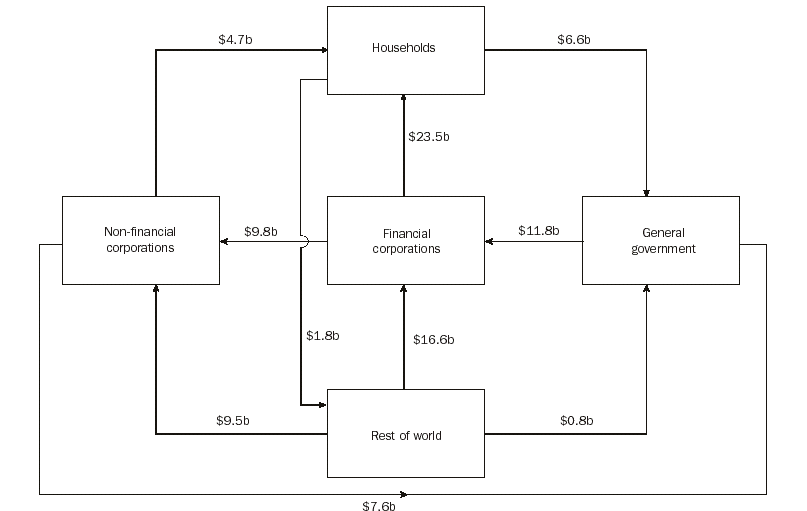The financial system in Australia can be thought of as having three overlapping components. The first consists of financial enterprises (such as banks) and regulatory authorities, the Reserve Bank and the Australian Prudential Regulation Authority (APRA). The second consists of financial markets (e.g. the bond market) and their participants (issuers such as governments, and investors such as superannuation funds). The third is the payments system - that is, the cash, cheque and electronic means by which payments are effected - and its participants (e.g. banks). The interaction of these components enables funds for investment or consumption to be made available from savings in other parts of the national or international economy.
This section provides a summary of the structure and activities of the three financial system components as they function currently. However, the financial system can, and does, change its structure and activities as a result of regulation or deregulation processes.
Regulation
From 1 July 1998 a new financial regulatory framework came into effect, in response to the recommendations of the Financial System Inquiry (the Wallis Committee). Under the new structure a single prudential supervisor, APRA, was established to take responsibility for the supervision of banks, life and general insurance companies and superannuation funds. The Australian Securities and Investments Commission (ASIC) assumed responsibility for market integrity and consumer protection across the financial system. The Reserve Bank retained responsibility for monetary policy and the maintenance of financial stability, including stability of the payments system.
From 1 July 1999 building societies and credit unions have been supervised by APRA. APRA supervises benefit funds of friendly societies under the Life Insurance Act 1995 (Cwlth), while health benefit funds of friendly societies are regulated by the Private Health Insurance Administration Council under the National Health Act 1959 (Cwlth). Prior to 1 July 1999, building societies, credit unions and friendly societies were regulated under state legislation.
On 1 July 2000 regulation of self-managed superannuation funds was transferred to the Australian Taxation Office (ATO). From September 2001 the Financial Sector (Collection of Statistics) Act 2001 (Cwlth) provided APRA with powers to collect information previously collected under the range of legislation for which it was responsible, and under the Financial Corporations Act administered by the Reserve Bank. The new legislation enables harmonised and consistent data collection from financial institutions; APRA will commence collection from registered financial corporations during 2003.
Inter-sectoral financial flows
Diagram 26.1 provides an overview of the flows of capital through the financial system and summarises the end result of applying the current statistical framework. It illustrates the net financial flows between sectors during the year 2001-02. The arrows show the net flow from lenders to borrowers. For example, there is a $23.5b net flow from the financial corporations sector to households. There is also an $9.8b net flow from financial corporations to non-financial corporations. This is mainly attributable to increased loans by financial intermediaries and increased share purchases by financial institutions such as life offices and pension funds.
26.1 INTER-SECTORAL FINANCIAL FLOWS - 2001-02

Note: The arrows show the direction of net financial flows from lending sectors to borrowing sectors. The number relating to each arrow indicates the value of that net flow during the period. Other claims are omitted from the diagram. For this reason, inter-sectoral borrowing does not equal inter-sectoral lending.
Source: Australian National Accounts: Financial Accounts, June 2002 (5232.0).
 Print Page
Print Page